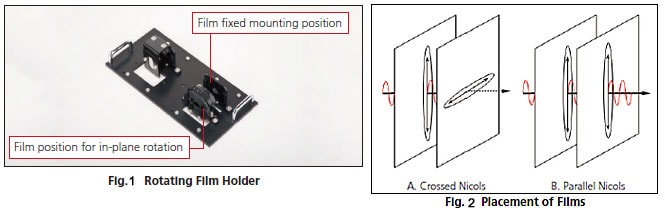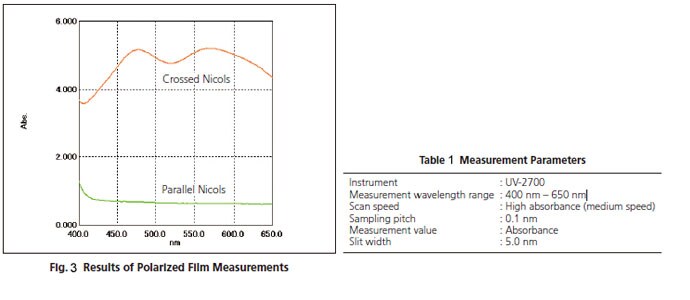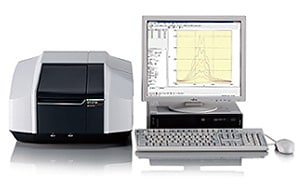Measurement of Polarized Film
Polarized film is a material that is widely used in liquid crystal displays and sunglasses, etc. Natural sunlight transmits light waves whose electric field vibrates in various directions, but this film consists of a material that allows only light vibrating in single plane to pass through, and is evaluated on the basis of screening and transmittance characteristics. Fig. 1 shows a rotating film holder which is used for measurement of polarized films. Two polarized film samples are set in the film holder, and one of the films is rotated in the plane. First, as shown in Fig. 2A, measurement is conducted with the film transmission axial directions at right angles to each other (crossed Nicols) to achieve the greatest level of screening. At this time, the transmittance shows its lowest value. Next, one of the polarized films is rotated 90 degrees, so that the transmission axial directions are parallel (parallel Nicols) to achieve the greatest light transmission, and measurement is conducted.

Fig. 3 shows the polarized film measurement results. Measurement was conducted using the parameters shown in Table 2. Even in the region of extremely high screening, in the range of 5-absorbance (0.001 % transmittance) in the crossed Nicols condition, a good spectrum is obtained.

Using the UV-2700 with its ultra-low level stray light, it is now possible to conduct measurement of samples that display extremely high absorption. Thus, it is the best instrument for high absorbance samples which cannot be thinly sliced, diluted or subjected to other pretreatment procedures, such as the polarized film used in this analysis.



